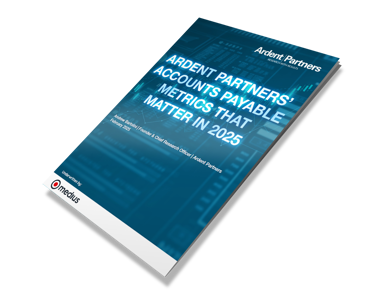ACH payments today: a reliable method in a multi-option world
B2B payments have come a long way. A decade ago, the big shift was simply moving away from paper checks. Today, the conversation looks very different. Finance leaders are asking how to balance ACH, real-time payments (RTP), virtual cards, wires, and global networks.
In this multi-rail world, ACH remains reliable, valued for its low cost and widespread acceptance. But in 2025, ACH isn’t the whole story. It’s part of a bigger, more strategic approach to payments.
Why AP still needs digitalization
Even with significant progress, many accounts payable (AP) teams continue to spend excessive time on manual processes, including chasing approvals, keying in invoices, or mailing paper checks. That results in higher labor costs, more risk, and less time for strategy.
That’s why AP automation has become a must-have. According to Ardent Partners’ Accounts Payable Metrics that Matter in 2025, best-in-class AP teams now process invoices in 3.1 days, compared to 17.4 days for all others. Their exception rates are just 9%, versus an industry average of 22%. And 65% of AP teams now play a role in corporate cash management—proof that AP has become central to financial strategy.¹
Automation empowers AP teams to manage and control across multiple payment methods. With a single platform, they can:
- Route payments via ACH, card, RTP, or wire, depending on supplier preference
- Eliminate manual errors and reduce fraud risk
- Improve visibility into cash outflows
- Free staff for higher-value analysis and strategy
Why AR needs speed and predictability
On the other hand, accounts receivable (AR) teams need payments to come in faster and more reliably. Slow payments increase days sales outstanding (DSO), weaken cash forecasts, and stunt growth, especially for smaller suppliers.
Digital payment methods are helping close the gap. Same-day ACH, RTP, and virtual cards provide suppliers with faster funding options, while automation aligns AP and AR processes, allowing both sides to share visibility into payment status.
This means fewer disputes, healthier supplier relationships, and better working capital for everyone involved.
ACH in 2025: reliable, but not alone
The benefits of ACH remain strong:
Low transaction fees compared to card payments
Same-day and next-day settlement for faster cash flow
Widespread adoption across industries and geographies
Improved security compared to paper checks
But ACH isn’t the only choice anymore. RTP offers instant settlement. Virtual cards offer strong fraud protection and cashback rebates. Roughly 25% of vendors already accept virtual cards.² Wires still dominate high-value or cross-border payments.
In short, ACH is the dependable middle ground, but it’s now part of a multi-payment method toolkit that finance leaders must manage strategically.
The future: multi-method payments, one seamless system
More than 68% of all enterprise payments are electronic, up from 62% in 2024.³ ACH may be the anchor, but businesses increasingly expect flexibility across every payment rail.
The future of B2B payments is clear:
Choice matters.
Suppliers want the option that best fits their cash flow.
Automation is the enabler.
One platform should manage ACH, cards, RTP, wires, and checks.
Visibility drives strategy.
Unified cash flow data across all rails empowers better forecasting and decision-making.
ACH isn’t going away. It’s still the backbone of many B2B transactions. But the real advantage comes from integrating ACH with every other payment method in one seamless workflow. That’s how finance leaders will reduce risk, optimize working capital, and strengthen supplier relationships in the years ahead.

Ready to move beyond paper and manage it all in one place?
Learn how Medius Payments helps you unify ACH, RTP, virtual cards, and more, without the manual work.
Sources
- Ardent Partners, Accounts Payable Metrics that Matter in 2025
- Ardent Partners, Accounts Payable Metrics that Matter in 2025; Ardent Partners, AP Metrics that Matter in 2024.







